| Ligand ID | Ligand short name | Ligand long name | PDB ID | PDB name | mutLBS |
G93 | | 4-{2-(4-AMINO-1,2,5-OXADIAZOL-3-YL)-1-ETHYL-7-[(3S)-PIPERIDIN-3-YLMETHOXY]-1H-IMIDAZO[4,5-C]PYRIDIN-4-YL}-2-METHYLBUT-3-YN-2-OL | 3d0e | A | A179 E200 L204 | G93 | | 4-{2-(4-AMINO-1,2,5-OXADIAZOL-3-YL)-1-ETHYL-7-[(3S)-PIPERIDIN-3-YLMETHOXY]-1H-IMIDAZO[4,5-C]PYRIDIN-4-YL}-2-METHYLBUT-3-YN-2-OL | 3d0e | B | A179 E200 L204 | ANP | | AMP-PNP | 1o6l | A | A179 T213 | L20 | | (2S)-1-(1H-INDOL-3-YL)-3-{[5-(3-METHYL-1H-INDAZOL-5-YL)PYRIDIN-3-YL]OXY}PROPAN-2-AMINE | 2jdr | A | A179 T213 | G95 | | N-[(1S)-2-AMINO-1-PHENYLETHYL]-5-(1H-PYRROLO[2,3-B]PYRIDIN-4-YL)THIOPHENE-2-CARBOXAMIDE | 3e87 | A | A179 T213 | G95 | | N-[(1S)-2-AMINO-1-PHENYLETHYL]-5-(1H-PYRROLO[2,3-B]PYRIDIN-4-YL)THIOPHENE-2-CARBOXAMIDE | 3e87 | B | A179 T213 | III | | Peptide ligand (GLY,ARG,PRO,ARG,THR,THR,SER,PHE,ALA,GLU) | 1o6l | A | D275 E342 | III | | Peptide ligand (GLY,ARG,PRO,ARG,THR,THR,SER,PHE,ALA,GLU) | 2xh5 | A | D275 E342 | III | | Peptide ligand (GLY,ARG,PRO,ARG,THR,THR,SER,PHE,ALA,GLU) | 2jdo | A | D275 E342 L348 | III | | Peptide ligand (GLY,ARG,PRO,ARG,THR,THR,SER,PHE,ALA,GLU) | 2uw9 | A | D275 E342 L348 | III | | Peptide ligand (GLY,ARG,PRO,ARG,THR,THR,SER,PHE,ALA,GLU) | 2x39 | A | D275 E342 L348 | III | | Peptide ligand (GLY,ARG,PRO,ARG,THR,THR,SER,PHE,ALA,GLU) | 3e88 | A | D275 E342 L348 | III | | Peptide ligand (GLY,ARG,PRO,ARG,THR,THR,SER,PHE,ALA,GLU) | 3e88 | B | D275 E342 L348 | III | | Peptide ligand (GLY,ARG,PRO,ARG,THR,THR,SER,PHE,ALA,GLU) | 3e87 | B | D275 E342 L348 D440 | III | | Peptide ligand (GLY,ARG,PRO,ARG,THR,THR,SER,PHE,ALA,GLU) | 3e8d | A | D275 E342 L348 Y351 | III | | Peptide ligand (GLY,ARG,PRO,ARG,THR,THR,SER,PHE,ALA,GLU) | 3e8d | B | D275 E342 L348 Y351 | III | | Peptide ligand (GLY,ARG,PRO,ARG,THR,THR,SER,PHE,ALA,GLU) | 3e87 | A | D275 E342 L348 Y351 D440 | III | | Peptide ligand (GLY,ARG,PRO,ARG,THR,THR,SER,PHE,ALA,GLU) | 1o6k | A | D275 E342 Y351 | III | | Peptide ligand (GLY,ARG,PRO,ARG,THR,THR,SER,PHE,ALA,GLU) | 2jdr | A | D275 E342 Y351 | I5S | | ISOQUINOLINE-5-SULFONIC ACID (2-(2-(4-CHLOROBENZYLOXY)ETHYLAMINO)ETHYL)AMIDE | 2jdo | A | G161 A179 | GVP | | 4-(4-CHLOROPHENYL)-4-[4-(1H-PYRAZOL-4-YL)PHENYL]PIPERIDINE | 2uw9 | A | G161 A179 | X39 | | 4-AMINO-N-(4-CHLOROBENZYL)-1-(7H-PYRROLO[2,3-D]PYRIMIDIN-4-YL)PIPERIDINE-4-CARBOXAMIDE | 2x39 | A | G161 A179 | G96 | | 4-[2-(4-AMINO-1,2,5-OXADIAZOL-3-YL)-6-{[(2R)-2-AMINO-3-PHENYLPROPYL]OXY}-1-ETHYL-1H-IMIDAZO[4,5-C]PYRIDIN-4-YL]-2-METHYLBUT-3-YN-2-OL | 3e88 | A | G161 A179 E200 L204 | G96 | | 4-[2-(4-AMINO-1,2,5-OXADIAZOL-3-YL)-6-{[(2R)-2-AMINO-3-PHENYLPROPYL]OXY}-1-ETHYL-1H-IMIDAZO[4,5-C]PYRIDIN-4-YL]-2-METHYLBUT-3-YN-2-OL | 3e88 | B | G161 A179 E200 L204 | G98 | | 4-[2-(4-AMINO-2,5-DIHYDRO-1,2,5-OXADIAZOL-3-YL)-6-{[(1S)-3-AMINO-1-PHENYLPROPYL]OXY}-1-ETHYL-1H-IMIDAZO[4,5-C]PYRIDIN-4-YL]-2-METHYLBUT-3-EN-2-OL | 3e8d | B | G161 A179 E200 L204 | G98 | | 4-[2-(4-AMINO-2,5-DIHYDRO-1,2,5-OXADIAZOL-3-YL)-6-{[(1S)-3-AMINO-1-PHENYLPROPYL]OXY}-1-ETHYL-1H-IMIDAZO[4,5-C]PYRIDIN-4-YL]-2-METHYLBUT-3-EN-2-OL | 3e8d | A | G161 A179 E200 L204 T213 | ANP | | AMP-PNP | 1o6k | A | G161 A179 T213 | X37 | | 4-(4-TERT-BUTYLBENZYL)-1-(7H-PYRROLO[2,3-D]PYRIMIDIN-4-YL)PIPERIDIN-4-AMINIUM | 2xh5 | A | G161 A179 T213 |
| LBS | AA sequence | # species | Species |
A179 | TGRYYAMKILR | 3 | Homo sapiens, Mus musculus, Rattus norvegicus | A179 | TAKLYAIKILK | 1 | Drosophila melanogaster | A232 | FVMEYANGGEL | 2 | Homo sapiens, Mus musculus | A232 | FVMQYVNGGEL | 1 | Drosophila melanogaster | A232 | FVMEYANGGDL | 1 | Rattus norvegicus | C311 | TMKTFCGTPEY | 3 | Homo sapiens, Mus musculus, Rattus norvegicus | C311 | TTKTFCGTPEY | 1 | Drosophila melanogaster | D275 | DVVYRDIKLEN | 3 | Homo sapiens, Mus musculus, Rattus norvegicus | D275 | GIIYRDLKLEN | 1 | Drosophila melanogaster | D293 | HIKITDFGLCK | 2 | Homo sapiens, Mus musculus | D293 | HIKVADFGLCK | 1 | Drosophila melanogaster | D293 | HIKITDFGLSK | 1 | Rattus norvegicus | D440 | DTRYFDDEFTA | 3 | Homo sapiens, Mus musculus, Rattus norvegicus | D440 | DTRYFDKEFTG | 1 | Drosophila melanogaster | E193 | IIAKDEVAHTV | 3 | Homo sapiens, Mus musculus, Rattus norvegicus | E193 | IIQKDEVAHTL | 1 | Drosophila melanogaster | E200 | AHTVTESRVLQ | 3 | Homo sapiens, Mus musculus, Rattus norvegicus | E200 | AHTLTESRVLK | 1 | Drosophila melanogaster | E230 | LCFVMEYANGG | 3 | Homo sapiens, Mus musculus, Rattus norvegicus | E230 | LCFVMQYVNGG | 1 | Drosophila melanogaster | E236 | YANGGELFFHL | 2 | Homo sapiens, Mus musculus | E236 | YVNGGELFWHL | 1 | Drosophila melanogaster | E236 | YANGGDLFFHL | 1 | Rattus norvegicus | E279 | RDIKLENLMLD | 3 | Homo sapiens, Mus musculus, Rattus norvegicus | E279 | RDLKLENLLLD | 1 | Drosophila melanogaster | E315 | FCGTPEYLAPE | 4 | Homo sapiens, Drosophila melanogaster, Mus musculus, Rattus norvegicus | E342 | GVVMYEMMCGR | 3 | Homo sapiens, Mus musculus, Rattus norvegicus | E342 | GVVMYEMICGR | 1 | Drosophila melanogaster | F163 | LGKGTFGKVIL | 4 | Homo sapiens, Drosophila melanogaster, Mus musculus, Rattus norvegicus | F227 | HDRLCFVMEYA | 3 | Homo sapiens, Mus musculus, Rattus norvegicus | F227 | NDRLCFVMQYV | 1 | Drosophila melanogaster | F238 | NGGELFFHLSR | 2 | Homo sapiens, Mus musculus | F238 | NGGELFWHLSH | 1 | Drosophila melanogaster | F238 | NGGDLFFHLSR | 1 | Rattus norvegicus | F294 | IKITDFGLCKE | 2 | Homo sapiens, Mus musculus | F294 | IKVADFGLCKE | 1 | Drosophila melanogaster | F294 | IKITDFGLSKE | 1 | Rattus norvegicus | F310 | ATMKTFCGTPE | 3 | Homo sapiens, Mus musculus, Rattus norvegicus | F310 | RTTKTFCGTPE | 1 | Drosophila melanogaster | F439 | VDTRYFDDEFT | 3 | Homo sapiens, Mus musculus, Rattus norvegicus | F439 | TDTRYFDKEFT | 1 | Drosophila melanogaster | F443 | YFDDEFTAQSI | 3 | Homo sapiens, Mus musculus, Rattus norvegicus | F443 | YFDKEFTGESV | 1 | Drosophila melanogaster | G159 | YLKLLGKGTFG | 3 | Homo sapiens, Mus musculus, Rattus norvegicus | G159 | FLKVLGKGTFG | 1 | Drosophila melanogaster | G161 | KLLGKGTFGKV | 3 | Homo sapiens, Mus musculus, Rattus norvegicus | G161 | KVLGKGTFGKV | 1 | Drosophila melanogaster | G164 | GKGTFGKVILV | 3 | Homo sapiens, Mus musculus, Rattus norvegicus | G164 | GKGTFGKVILC | 1 | Drosophila melanogaster | G312 | MKTFCGTPEYL | 3 | Homo sapiens, Mus musculus, Rattus norvegicus | G312 | TKTFCGTPEYL | 1 | Drosophila melanogaster | H196 | KDEVAHTVTES | 3 | Homo sapiens, Mus musculus, Rattus norvegicus | H196 | KDEVAHTLTES | 1 | Drosophila melanogaster | K160 | LKLLGKGTFGK | 3 | Homo sapiens, Mus musculus, Rattus norvegicus | K160 | LKVLGKGTFGK | 1 | Drosophila melanogaster | K165 | KGTFGKVILVR | 3 | Homo sapiens, Mus musculus, Rattus norvegicus | K165 | KGTFGKVILCR | 1 | Drosophila melanogaster | K181 | RYYAMKILRKE | 3 | Homo sapiens, Mus musculus, Rattus norvegicus | K181 | KLYAIKILKKE | 1 | Drosophila melanogaster | K277 | VYRDIKLENLM | 3 | Homo sapiens, Mus musculus, Rattus norvegicus | K277 | IYRDLKLENLL | 1 | Drosophila melanogaster | L158 | DYLKLLGKGTF | 3 | Homo sapiens, Mus musculus, Rattus norvegicus | L158 | EFLKVLGKGTF | 1 | Drosophila melanogaster | L183 | YAMKILRKEVI | 3 | Homo sapiens, Mus musculus, Rattus norvegicus | L183 | YAIKILKKEVI | 1 | Drosophila melanogaster | L204 | TESRVLQNTRH | 3 | Homo sapiens, Mus musculus, Rattus norvegicus | L204 | TESRVLKSTNH | 1 | Drosophila melanogaster | L278 | YRDIKLENLML | 3 | Homo sapiens, Mus musculus, Rattus norvegicus | L278 | YRDLKLENLLL | 1 | Drosophila melanogaster | L296 | ITDFGLCKEGI | 2 | Homo sapiens, Mus musculus | L296 | VADFGLCKEDI | 1 | Drosophila melanogaster | L296 | ITDFGLSKEGI | 1 | Rattus norvegicus | L317 | GTPEYLAPEVL | 4 | Homo sapiens, Drosophila melanogaster, Mus musculus, Rattus norvegicus | L348 | MMCGRLPFYNQ | 3 | Homo sapiens, Mus musculus, Rattus norvegicus | L348 | MICGRLPFYNR | 1 | Drosophila melanogaster | M229 | RLCFVMEYANG | 3 | Homo sapiens, Mus musculus, Rattus norvegicus | M229 | RLCFVMQYVNG | 1 | Drosophila melanogaster | M282 | KLENLMLDKDG | 3 | Homo sapiens, Mus musculus, Rattus norvegicus | M282 | KLENLLLDKDG | 1 | Drosophila melanogaster | N280 | DIKLENLMLDK | 3 | Homo sapiens, Mus musculus, Rattus norvegicus | N280 | DLKLENLLLDK | 1 | Drosophila melanogaster | P314 | TFCGTPEYLAP | 4 | Homo sapiens, Drosophila melanogaster, Mus musculus, Rattus norvegicus | S242 | LFFHLSRERVF | 3 | Homo sapiens, Mus musculus, Rattus norvegicus | S242 | LFWHLSHERIF | 1 | Drosophila melanogaster | T162 | LLGKGTFGKVI | 3 | Homo sapiens, Mus musculus, Rattus norvegicus | T162 | VLGKGTFGKVI | 1 | Drosophila melanogaster | T213 | RHPFLTALKYA | 3 | Homo sapiens, Mus musculus, Rattus norvegicus | T213 | NHPFLISLKYS | 1 | Drosophila melanogaster | T292 | GHIKITDFGLC | 2 | Homo sapiens, Mus musculus | T292 | GHIKVADFGLC | 1 | Drosophila melanogaster | T292 | GHIKITDFGLS | 1 | Rattus norvegicus | T309 | GATMKTFCGTP | 3 | Homo sapiens, Mus musculus, Rattus norvegicus | T309 | GRTTKTFCGTP | 1 | Drosophila melanogaster | T313 | KTFCGTPEYLA | 4 | Homo sapiens, Drosophila melanogaster, Mus musculus, Rattus norvegicus | V166 | GTFGKVILVRE | 3 | Homo sapiens, Mus musculus, Rattus norvegicus | V166 | GTFGKVILCRE | 1 | Drosophila melanogaster | Y231 | CFVMEYANGGE | 2 | Homo sapiens, Mus musculus | Y231 | CFVMQYVNGGE | 1 | Drosophila melanogaster | Y231 | CFVMEYANGGD | 1 | Rattus norvegicus | Y316 | CGTPEYLAPEV | 4 | Homo sapiens, Drosophila melanogaster, Mus musculus, Rattus norvegicus | Y351 | GRLPFYNQDHE | 3 | Homo sapiens, Mus musculus, Rattus norvegicus | Y351 | GRLPFYNRDHD | 1 | Drosophila melanogaster |
 Gene summary
Gene summary  Gene ontology having evidence of Inferred from Direct Assay (IDA) from Entrez
Gene ontology having evidence of Inferred from Direct Assay (IDA) from Entrez  Lollipop-style diagram of mutations at LBS in amino-acid sequence.
Lollipop-style diagram of mutations at LBS in amino-acid sequence. 
 Cancer type specific mutLBS sorted by frequency
Cancer type specific mutLBS sorted by frequency Relative protein structure stability change (ΔΔE) using Mupro 1.1
Relative protein structure stability change (ΔΔE) using Mupro 1.1  : nsSNV at non-LBS
: nsSNV at non-LBS : nsSNV at LBS
: nsSNV at LBS
 nsSNVs sorted by the relative stability change of protein structure by each mutation
nsSNVs sorted by the relative stability change of protein structure by each mutation  Structure image for AKT2 from PDB
Structure image for AKT2 from PDB Differential gene expression between mutated and non-mutated LBS samples in all 16 major cancer types
Differential gene expression between mutated and non-mutated LBS samples in all 16 major cancer types Differential co-expressed gene network based on protein-protein interaction data (CePIN)
Differential co-expressed gene network based on protein-protein interaction data (CePIN) Gene level disease information (DisGeNet)
Gene level disease information (DisGeNet)  Mutation level pathogenic information (ClinVar annotation)
Mutation level pathogenic information (ClinVar annotation)  Gene expression profile of anticancer drug treated cell-lines (CCLE)
Gene expression profile of anticancer drug treated cell-lines (CCLE)
 Gene-centered drug-gene interaction network
Gene-centered drug-gene interaction network 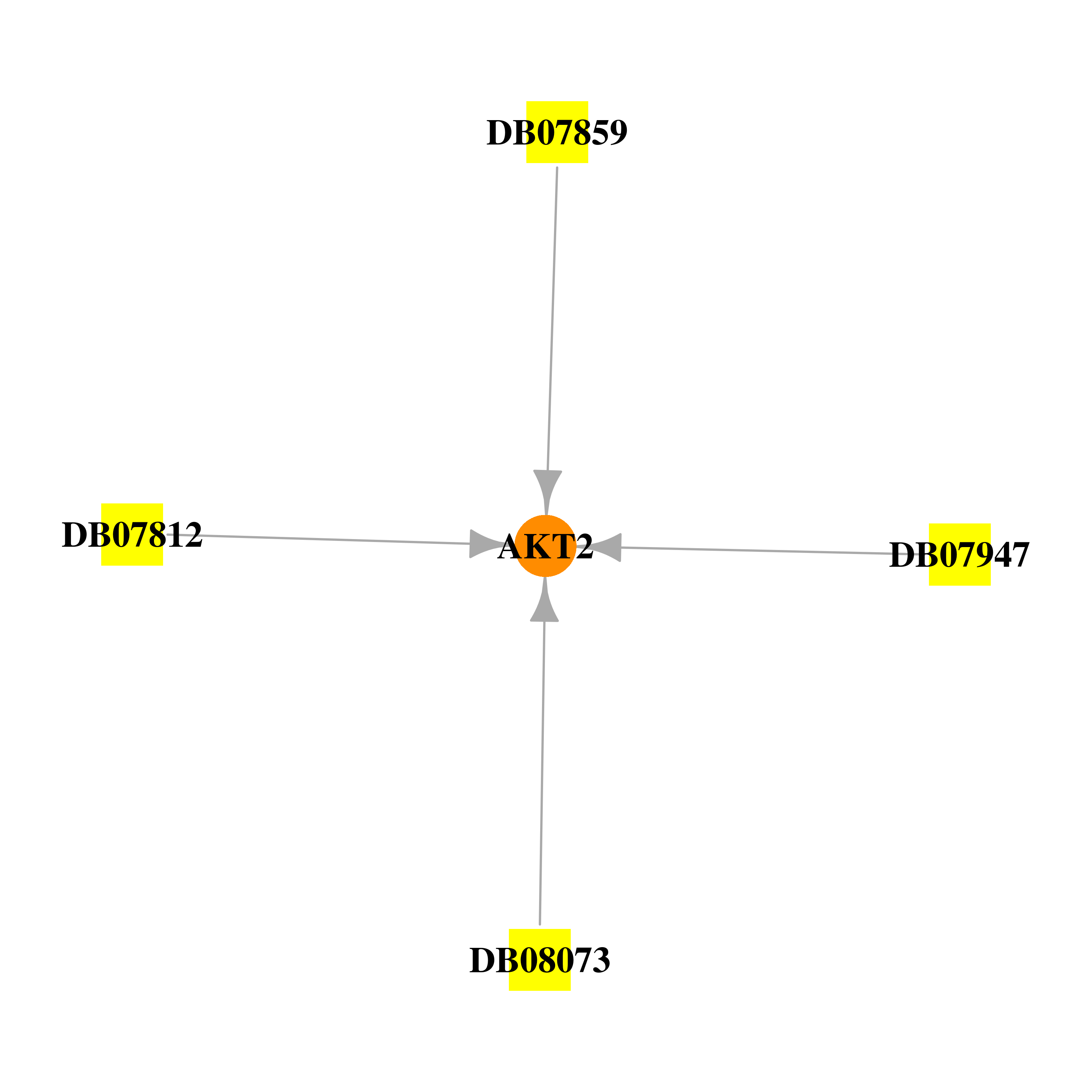
 Drug information targeting mutLBSgene (Approved drugs only)
Drug information targeting mutLBSgene (Approved drugs only)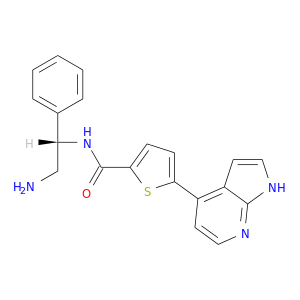
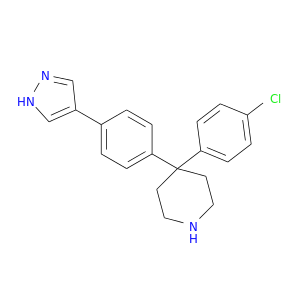
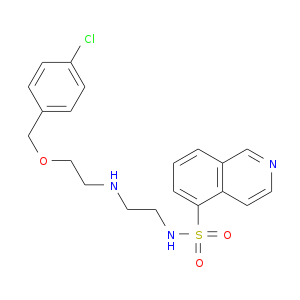
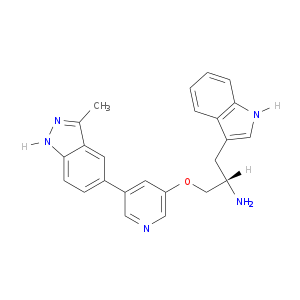
 Gene-centered ligand-gene interaction network
Gene-centered ligand-gene interaction network 
 Ligands binding to mutated ligand binding site of AKT2 go to BioLip
Ligands binding to mutated ligand binding site of AKT2 go to BioLip Multiple alignments for P31751 in multiple species
Multiple alignments for P31751 in multiple species 
